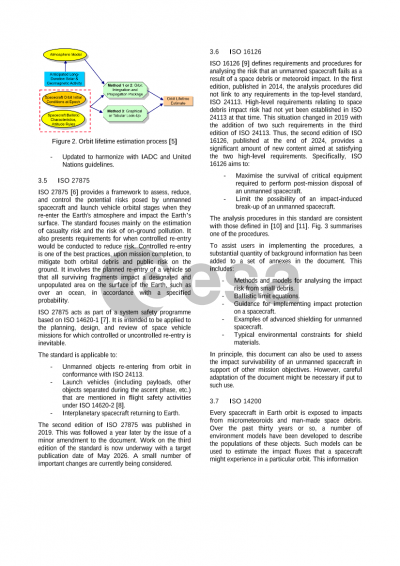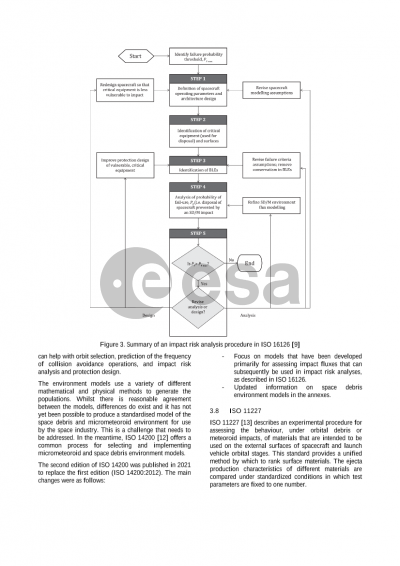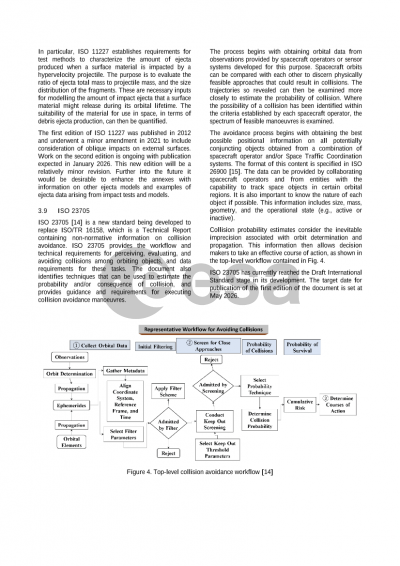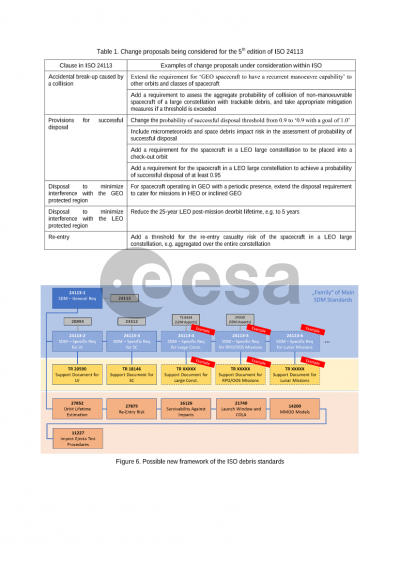Document details

Abstract
This paper provides an update on the framework of space debris mitigation standards developed by ISO since 2003.
The main purpose of the ISO standards is to transform guidelines and best practices from the IADC, the United Nations, spacecraft operators and regulatory bodies into a comprehensive set of debris mitigation requirements that can be used by the space industry worldwide. A key objective of the standards is to formulate requirements in such a way that they can be readily implemented in the contractual agreement between a customer and supplier. This helps to avoid differences in interpretation during the procurement of spacecraft or launch services. The ISO standards can also be used as the basis for national regulations on space debris mitigation, or they can be applied voluntarily. It is worth noting that the standards have already been used to guide a number of countries in their space activities, and so they now represent an important contribution in global efforts to address the space debris problem.
ISO organises the debris mitigation standards in a hierarchical structure. All of the top-level requirements are contained in the standard, ISO 24113 (Space systems – Space debris mitigation requirements), the fourth edition of which was published in 2023. This is the most important debris standard. It contains an effective and realistic set of measures focused on: avoiding the release of objects during normal operations; prevention of on-orbit break-ups; post-mission disposal of spacecraft and orbital stages; and re-entry risk management. Below ISO 24113 in the hierarchy there are a number of lower level implementation standards and informative technical reports to support compliance with the requirements in ISO 24113.
This paper discusses the main changes that have occurred in the family of ISO debris standards during the past five years or so and the rationale for the changes. In particular, some new and challenging requirements have been introduced into ISO 24113 in recognition of the rapidly evolving space environment, especially in low Earth orbit. A technical specification has also been published as a first step towards the development of a new standard containing debris mitigation requirements specific to large constellations. And, following industry feedback, the content of several of the lower level implementation standards has been consolidated to produce a smaller, more coherent set of supporting standards.
In terms of the way ahead, the paper will discuss the latest thinking within ISO for how the debris mitigation standards might evolve. Aside from the usual considerations regarding the addition of stricter requirements, the possibility of a new framework structure for the standards will also be presented. Efforts such as these will ensure that the ISO debris standards remain relevant and broadly applicable. Ultimately, the standards must create a level competitive environment for the entire industry whilst promoting the long-term sustainability of space activities in a fair and equitable manner. That is the key measure of their success.
Preview












